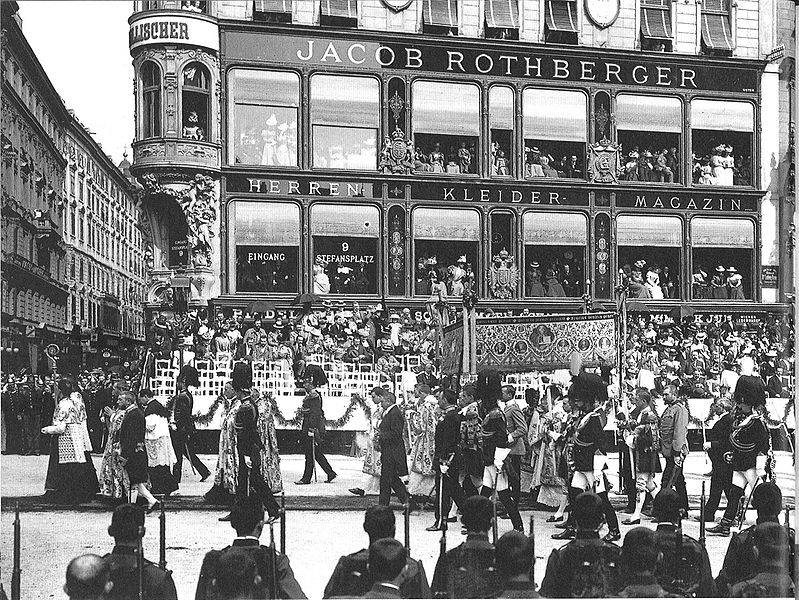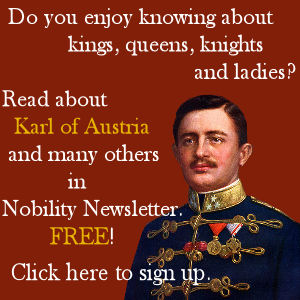
Emperor Franz Joseph I of Austria taking part in the Corpus Christi procession at Stephansplatz in Vienna.
In addition to his seventeen territorial titles, the Emperor was described as “His Apostolic Majesty”: the monarchy was the greatest Roman Catholic power in the world. At an Easter ceremony every year, the Emperor and the Empress washed the feet of the poor, in a humble imitation of Christ…. On the feast of Corpus Christi, the Emperor joined in the clerical procession, carrying a lighted candle in his hands….
The Corpus Christi procession outshone all others. The restraint of Lent and the grave pomp of Easter had been left behind: this was a dazzling occasion. The soldiers and gendarmes lining the streets had ivy leaves in their helmets; the archdukes arrived separately, in crystal calèches drawn by six grays; then the Emperor, accompanied by Archduke Franz Ferdinand, came in a carriage of gold and crystal, drawn by eight horses….
The ceremonial occasions bound the rulers and the ruled together by invisible links, but they gave more pleasure to the ruled.
Z A B Zeman, Twilight of the Habsburgs: The Collapse of the Austro-Hungarian Empire ( New York: American Heritage Press, 1971), pp. 21, 64.
Short Stories on Honor, Chivalry, and the World of Nobility—no. 185
Nobility.org Editorial comment: —
This excerpt from Z.A.B. Zeman illustrates several important points.
First, it attests to the the lively faith of the Habsburg monarchs, how they displayed it unashamedly in public, setting a good example for their people, and boosting public morality. Who is not moved to be more charitable, for example, seeing that his Emperor and Empress wash the feet of the poor on Holy Thursday?
Second, it shows how the Catholic Faith in Austria during the reign of Franz Josef was not in the great crisis it is in today. There where great public religious ceremonies with significant participation from the broad public.
Third, it illustrates how the Catholic Faith when it is well practiced, is a great bonding agent between rulers and ruled. It smooths over the inevitable differences and harmonizes temperaments; it encourages people to concord, not conflict, solving problems as brothers not as enemies; it encourages people to dream of nobler and higher things, raising their horizons and encouraging them to pursue them manfully.
To extricate ourselves from today’s moral abyss, we need to return to these standards, and the nobility and analogous traditional elites need to lead the way.







